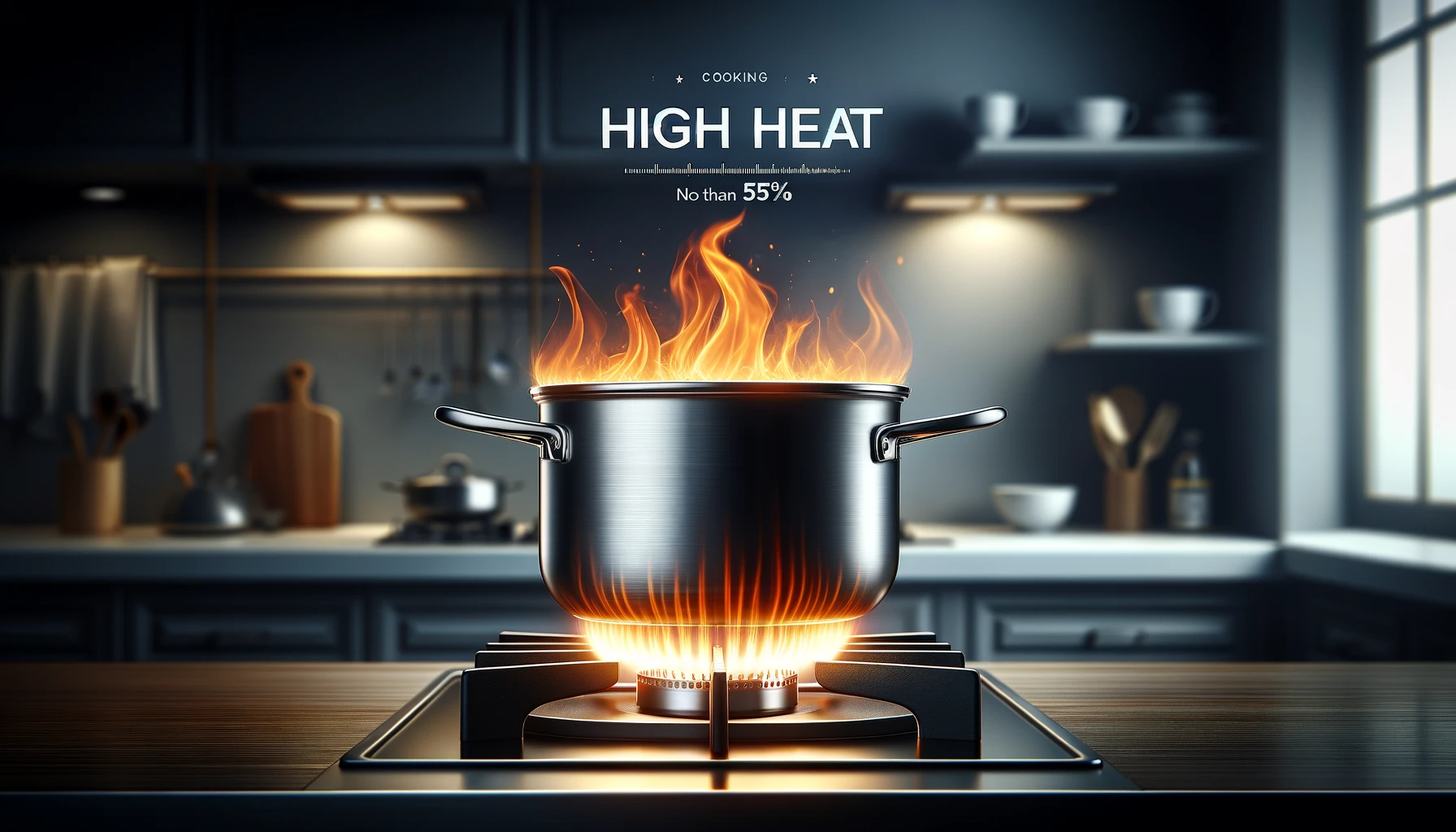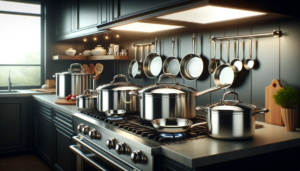Have you ever wondered if your stainless steel pots and pans can handle the high heat required to properly sear, stir-fry, or boil?
Stainless steel is actually an ideal material for high-heat cooking thanks to its durability, heat conductivity, and thermal properties that allow it to easily withstand temperatures over 500 degrees Fahrenheit.
Let’s explore why stainless steel holds up to intense stove-top heat and how to use it safely for high-temperature cooking.
Can You Use High Heat Stainless Steel Cookware?
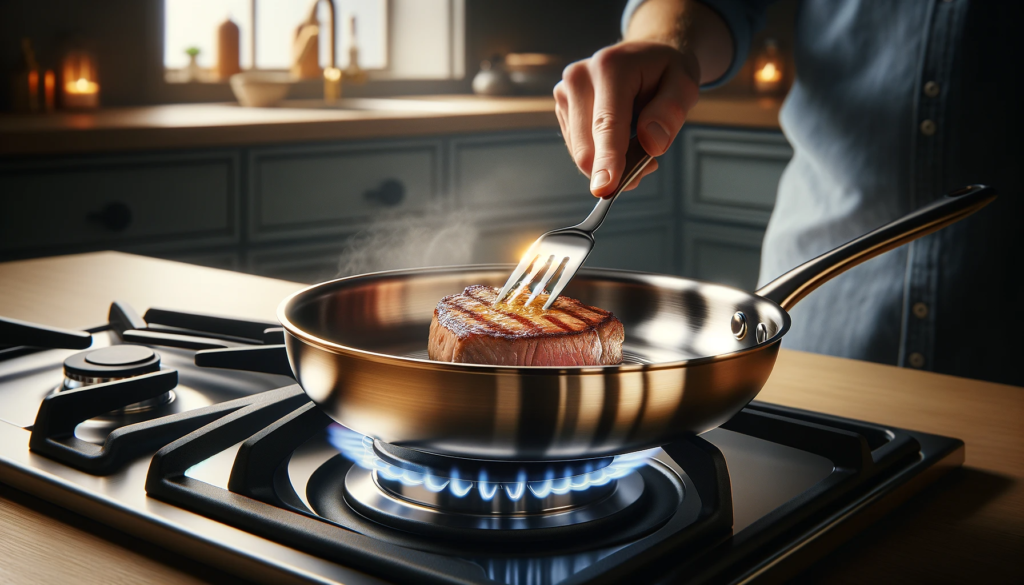
Yes, you can use high heat with stainless steel cookware.
Stainless steel is highly durable and conductive, allowing most quality stainless steel pots and pans to be safely used on high stovetop settings up to 600 degrees Fahrenheit.
The properties of stainless steel make it heat evenly and resist warping, even when exposed to intense temperatures needed for searing, boiling, or stir-frying.
We’ll explore why stainless steel stands up so well to high heat and provide tips for cooking with stainless steel cookware over intense temperatures later on.
Stainless Steel Can Withstand High Heat
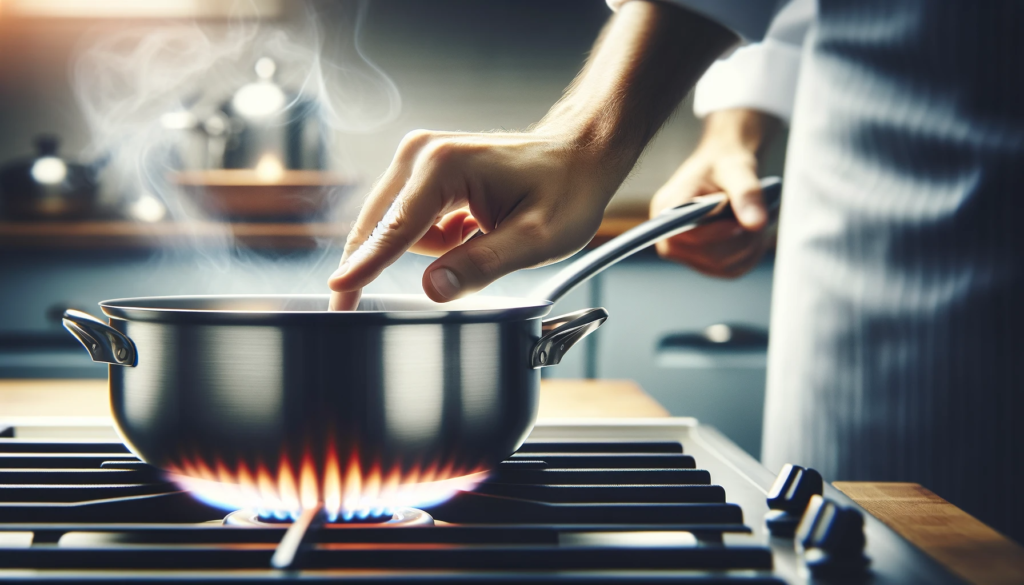
Stainless steel is a very durable metal that can withstand high heat levels.
The excellent heat conductivity of stainless steel materials such as chromium and nickel allow for efficient and even heating at high temperatures.
Most stainless steel pots and pans can be used safely on the high heat setting on a stovetop, usually around five hundred to six hundred degrees Fahrenheit.
Some specialty stainless steel cookware with higher nickel content can tolerate heat over six hundred degrees, making it extremely versatile for high-heat tasks like searing or stir-frying.
As long as the cookware is being used properly at reasonable heat settings, stainless steel will hold up very well in high temperatures.
The great thermal properties and conductivity of stainless steel make it the perfect material for cookware that you intend to use for high heat cooking.
Stainless steel is typically combined with metals like aluminum and copper, which promote quick, even heating and further enhance high-heat performance.
The durability and sturdiness of stainless steel ensures that the cookware will not easily warp, bend, or melt when exposed to the high heat energy of a stovetop burner.
High heat for short periods of time, like when boiling water or searing a steak, is no match for quality stainless steel.
So when you need to bring ingredients to a rapid simmer or achieve the perfect sear on meat, your stainless steel cookware has you covered.
Monitor Cookware When Using High Heat
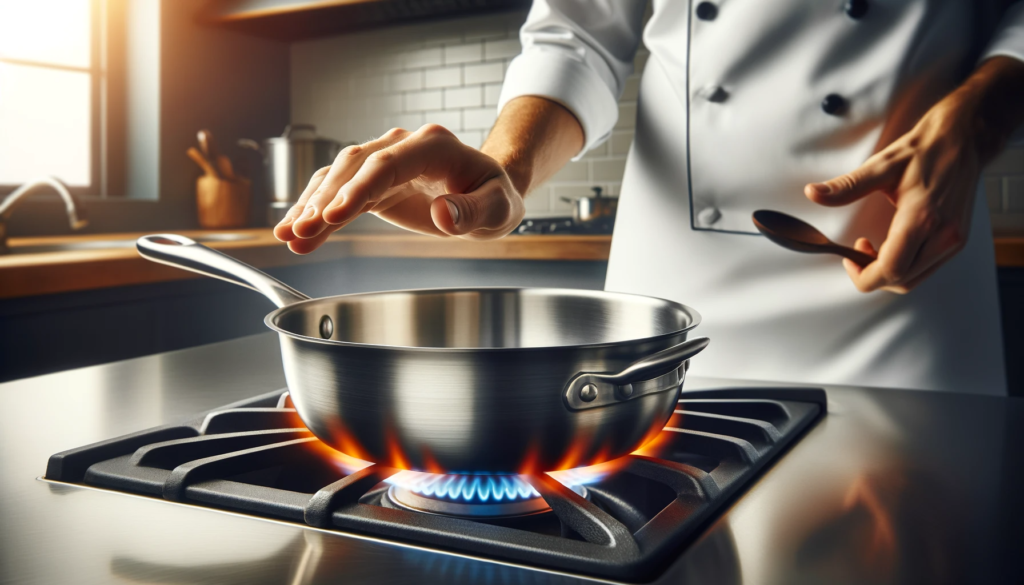
Although stainless steel can endure extremely high heats without issue, it is still important to monitor your cookware when cooking over high heat.
Prolonged exposure to maximum temperatures over six hundred degrees Fahrenheit may cause stainless steel pans to warp or develop discoloration over time.
To prevent potential damage to your cookware, keep an eye on pans when cooking over high heat and avoid leaving empty stainless steel pans over a hot burner for extended periods of time, which can lead to uneven heating and hot spots.
The intense heat may also cause the steel to expand and contract enough to gradually distort the shape of the pan.
Some stainless steel cookware comes equipped with copper or aluminum touchdowns on the bottom of the pan to facilitate quick, even heating and prevent warping.
When shopping for stainless steel pots and pans for high heat cooking, look for cookware that has an encapsulated or bonded heat-conductive base to ensure efficient heating without uneven hot spots.
Always make sure your cookware is making full contact with the burner before turning on the heat.
Allowing space for air pockets between the cookware and your stovetop while using high heat can scorch the pan and make stainless steel more prone to warping during cooking.
Tips for Cooking Over High Heat
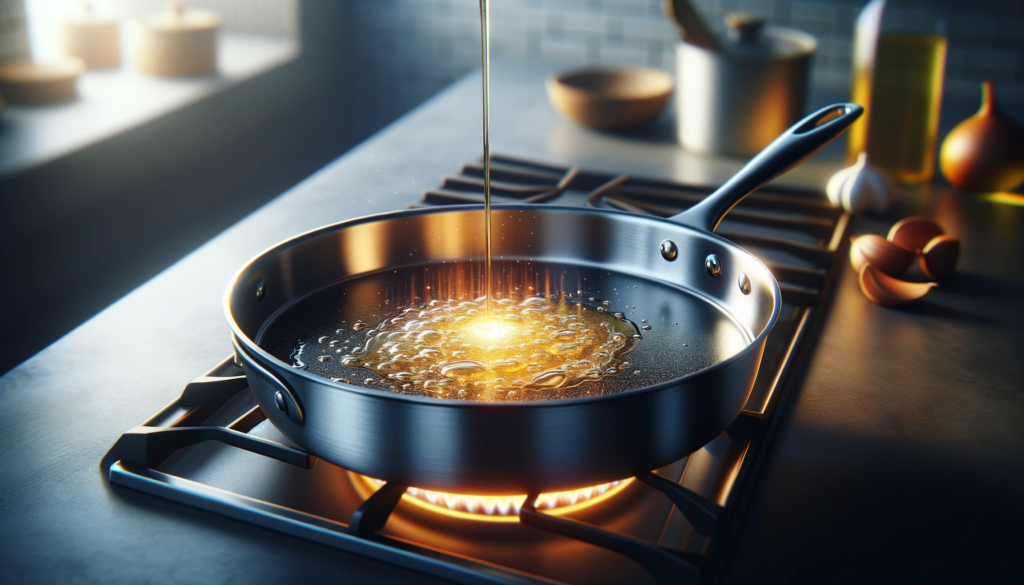
When cooking over high heat with your stainless steel cookware, follow a few best practices to keep your pans in great shape.
Be sure to use enough oil or cooking fat when preheating empty cookware on high heat to prevent food from sticking.
Oil helps create a barrier between food and the metal cooking surface.
Without oil, high heat can cause food to bond to the pan, resulting in burning and stubborn stuck-on bits of food that can be difficult to remove from the surface of the pan.
Do not ever allow liquids to simmer dry or reach scorching temperatures that produce burning on the bottom of stainless steel cookware.
The blackened, stuck-on bits that result from boiling a pan dry require abrasive scrubbing to remove, which wears down the protective finish over time.
Always keep an eye on boiling or simmering liquids over high heat and add more liquid as evaporation occurs to prevent the pan from being damaged.
While cooking over high heat on the stovetop, adjust the temperature setting periodically to prevent excessive hot spots in your cookware.
Some areas of the pan may reach intensely high temperatures, especially if the pan does not have a fully encapsulated base.
Alternating between high heat for boiling or searing and lower heat for gentler simmering protects the integrity of your stainless steel while still providing the rapid heating you need to prepare ingredients properly.
Even with careful use, stainless steel over high heat may develop some superficial discoloration or mineral staining from cooking over time.
Remove any minor cosmetic issues by letting pans soak in hot water with lemon juice or vinegar before scrubbing with non-abrasive cleaners.
Harsh scouring pads can damage stainless steel finishes, so gentle cleaning is best for preserving your cookware.
Choose Cookware Carefully

When purchasing stainless steel cookware for regular high-heat cooking, choose pieces wisely to ensure durability.
Opt for stainless steel pots and pans that feature a fully encapsulated or bonded copper or aluminum base, which allows for the quickest, most efficient heating without hot spots over high heat.
The layered metal builds heat slowly but retains it well compared to single-layer stainless steel cookware.
Always check the manufacturer’s documentation to determine the recommended safe heating range for your specific stainless steel cookware before using over an open flame or high stovetop setting.
Most quality stainless steel can tolerate heat up to six hundred degrees Fahrenheit intermittently, but cheaper stainless steel may only cope with lower maximum temps before becoming damaged.
Higher gauge stainless steel pans are the best choice for avoiding warping when exposed repeatedly to extreme heat.
Lower gauge numbers, like sixteen or eighteen gauge steel, indicate thicker, heavier metal that will resist warping better than thinner twenty gauge steel often found in cheap cookware.
While thin stainless steel conducts heat quickly, it cannot endure intensive heat stress very well without sustaining damage over time from repeated heating and cooling cycles.
With proper care and precautions, high-quality stainless steel cookware can put up with the demands of recurrent high-heat cooking.
Always monitor pans during use, allow even heating on stove burners, and avoid abrasives when cleaning for long-lasting performance from your stainless steel pots and pans.
The durability and versatility of stainless steel makes it the ideal cookware material for achieving a perfect sear while also gently simmering sauces afterward.
By selecting top-of-the-line stainless steel designed for rapid, uniform heating, you can confidently use high heat for an endless array of recipes requiring both high heat searing and slower simmering.
Conclusion
Stainless steel, when used properly, is an incredibly versatile material that can withstand the high heat required for countless cooking techniques.
By choosing high-quality cookware designed for heat retention and conduction, monitoring pan temperatures, and caring for pans gently, stainless steel can be your go-to for anything from boiling liquids to searing the perfect steak.
With the proper precautions, cooks who rely on intense heat can fully leverage stainless steel durability.
